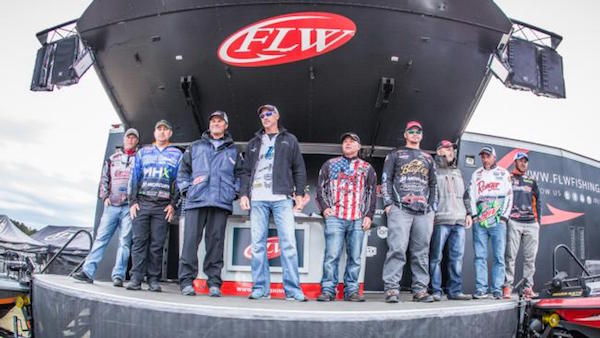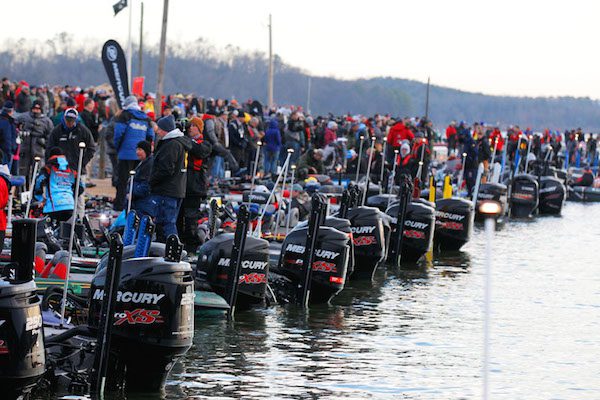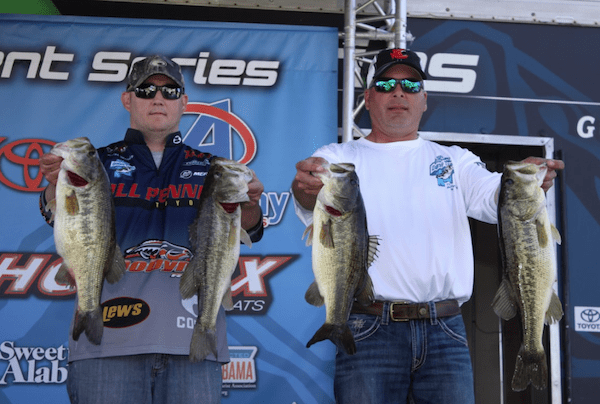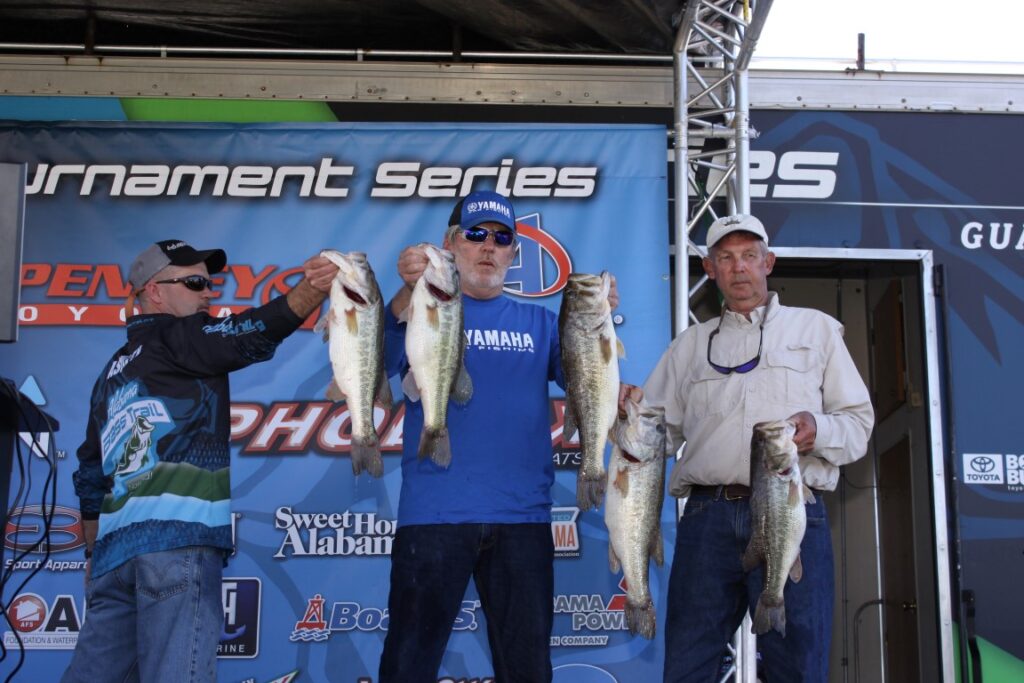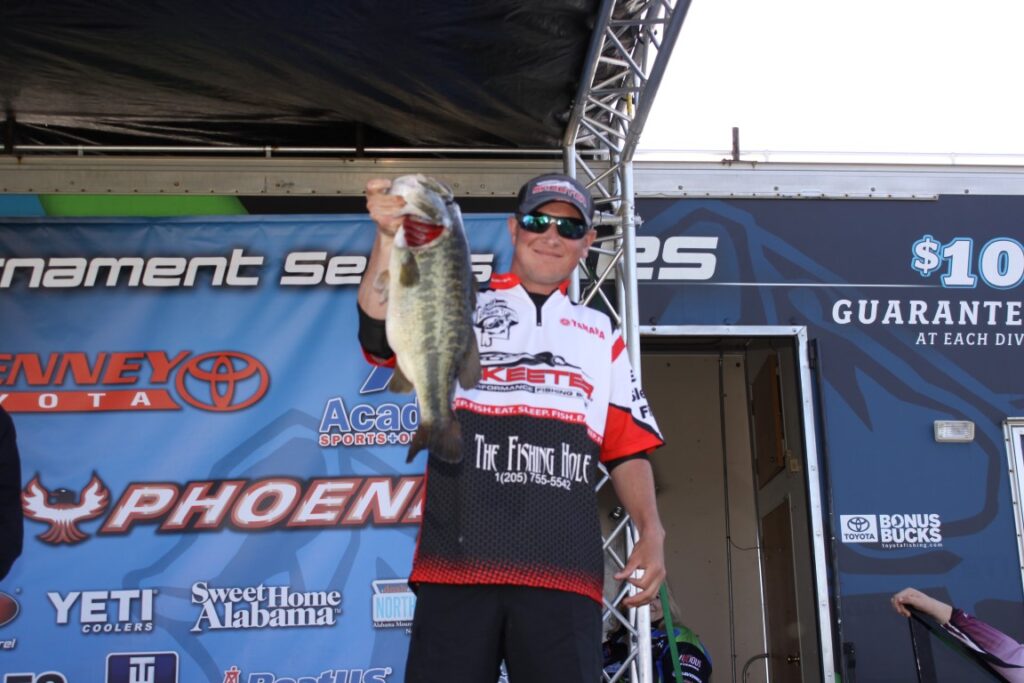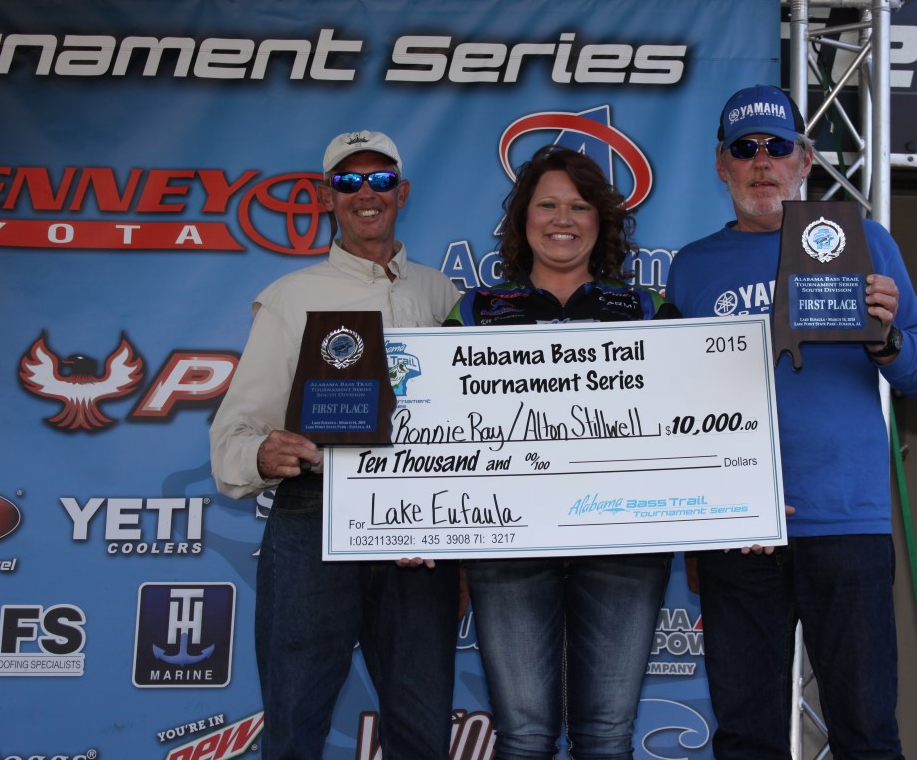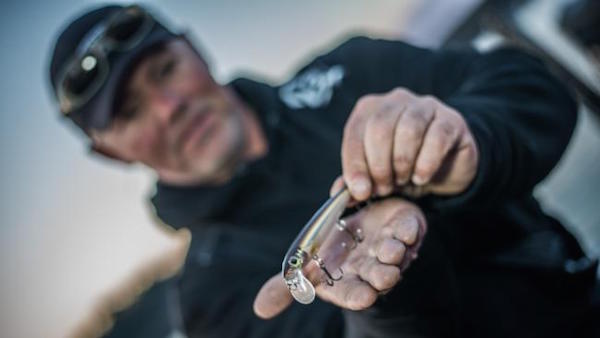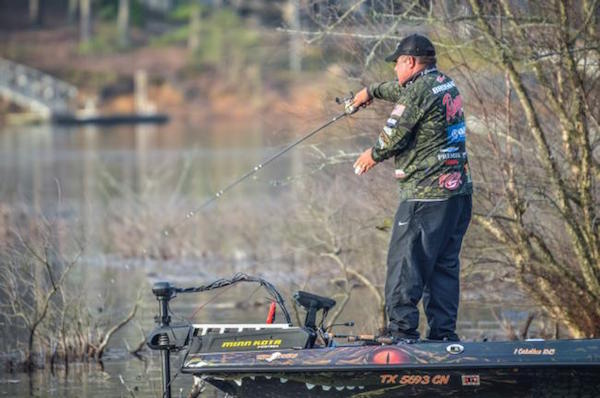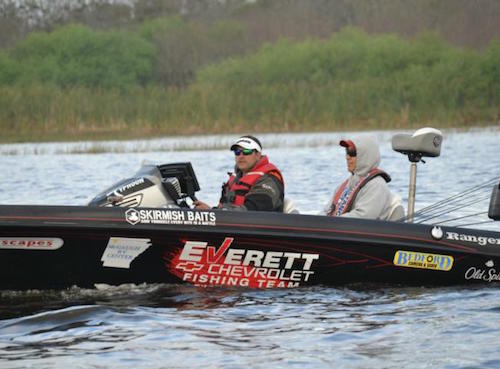FLW COLLEGE FISHING NATIONAL CHAMPIONSHIP HEADING TO LAKE MURRAY
[print_link]
COLUMBIA, S.C. (April 2, 2015) – College teams from across the country will be heading to Lake Murray in Columbia, South Carolina, April 16 – 18 for the 2015 FLW College Fishing National Championship presented by the Lowrance Insight Genesis College Cup. Fifty college bass fishing duos will be competing for a top award of a Ranger Z117 with a 90-horsepower outboard and entry into the 2015 Forrest Wood Cup, the world championship of bass fishing.
According to reigning Forrest Wood Cup champion Anthony Gagliardi, who won the championship on Lake Murray, it will be typical springtime fishing at its best. “This event will hit the lake right at the heart of the spawn and bass will be in all stages. We should see spawning, prespawn and postspawn bass all being caught.”
According to Gagliardi the best targets are going to be the pre and postspawn bass. Popular baits expected to be thrown will be spinnerbaits and swimbaits. He went on to say that depending on the weather, herring-spawn topwater baits could play a factor as well.
“It’s not hard to catch fish on Murray but the one thing teams are going to have to be careful of is getting sucked into a pattern that is producing fish, but not the right size fish,” Gagliardi continued. “It’s hard to move when you’re catching 2-pound fish cast after cast after cast. But those are not the fish that are going to win the tournament. Teams are going to have to move away from those areas to go and find the 4- to 5-pounders that they’ll need to make a difference.
“It’s going to be a fun tournament with a lot of fish caught. Teams are going to be competing for the same water so having multiple productive locations will be the difference between winning and losing.”
Gagliardi believes that teams are going to have to consistently bring in 18- to 20-pound sacks to become champion. Back-up plans are going to be clutch. He cautions that one spot will not carry them through the entire tournament to earn victory.
Anglers will take off from SCE&G North Recreation Area at Dreher Shoals Dam located at 2101 N. Lake Drive, in Columbia at 7 a.m. Weigh-in will be held adjacent to Carolina Stadium at Williams and Wheat Streets in Columbia beginning at 5 p.m. Thursday and Friday and 4 p.m. Saturday (or immediately following the end of the University of South Carolina baseball game). Takeoff and weigh-in are free and open to the public.
Schools competing in the 2015 FLW College Fishing National Championship, which is hosted by Capital City Lake Murray Country, include:
Arkansas Tech University – Sawyer Grace, Russellville, Ark., and Brandon Rieve, Sheridan, Ark.
Auburn University – Ben Curry, Hayden, Ala., and Timmy Ward, Sylacauga, Ala.
Auburn University – Candler McCollum, Auburn, Ala., and Wiliam Bates, Suwanee, Ga.
California State University-Chico – Andrew Loberg, Rocklin, Calif., and Michael Braswell, Chico, Calif.
Christopher Newport University – Peter Kenny, Ashburn, Va., and Cody Griffey, Smithfield, Va.
Colorado Mesa University – Kennedy Kinkade and Josh Worth, both of Grand Junction, Colo.
East Central University – Tanner Masters and Wyatt Ryan, both of Ada, Okla.
Eastern Kentucky University – Kyle Raymer, Brandenburg, Ky., and Ethan Snyder, Vine Grove, Ky.
Eastern Washington University – Cy Floyd, Wenatchee, Wash., and Tyler Wasilewski, Cheney, Wash.
Eastern Washington University – Nick Barr, San Antonio, Texas, and Jarred Walker, Cheney, Wash.
Humboldt State University – Christopher Childers, McKinleyville, Calif., and Erich Coulter, Arcata, Calif.
Jacksonville State University – Nate Killough, Sylacauga, Ala., and Will Bullen Jacksonville, Ala.
Kansas State University – Nathen Kozlowski, Junction City, Kan., and Lance Maldonado, Chapman, Kan.
Kent State University – Trevor White, Newton Falls, Ohio, and Greg Perry, Cortland, Ohio
Lamar University – Brandon Simoneaux, Bridge City, Texas, and Josh Bowie, Port Neches, Texas
Lamar University – Cameron Lafleur, Orangefield, Texas and Justin Royal, Vidor, Texas
Lamar University – Quinton Evans, Orange, Texas, and Colby Ogden, Kountze, Texas
Liberty University – Travis Rulle, Denver, N.C., and Caleb Eppler, Sachse, Texas
Louisiana Tech University – Caleb Boudreaux, Doyline, La., and Matthew Loetscher, Many, La.
Mansfield University – Matt Novitski, Kingston, Pa., and Alec Engleman, Milton, Pa.
McKendree University – Dustin Pendegraft, Summerfield, Ill., and Phillip Germagliotti, Highland, Ill.
Murray State University – Justin Graben, Murray, Ky., and Dan Schult, Millstadt, Ill.
Murray State University – Seth Brock, Cedar Hill, Tenn., and Lance Freeman, Eddyville, Ky.
Nicholls State University – Trevor Leblanc and Jess Robertson both of Houma, La.
Oregon State University – Chase Cochran, Corvallis, Ore., and Ryan Sparks, Gearhart, Ore.
Oregon State University – Peter Kawamura and Eric Strickler both of Corvallis, Ore.
Polk State College – Wesley Wise, Lake Wales, Fla., and Luke Ferguson, Bartow, Fla.
Radford University – Will Bowling, Fincastle, Va., and Justin Witten, Radford, Va.
Ramapo College – Joseph Zapf and Andrew Zapf, both of Whippany, N.J.
Rutgers University – New Brunswick/Piscataway – Kyle Genova, Millstone Twp. N.J., and Andrew Ridinger, Thorofare, N.J.
San Jose State University – Adam McAndrews, Santa Clara, Calif., and Joey Fortina, Ben Lomond, Calif.
Shenandoah University – Thomas Arens, and Billy Arens, both of Winchester, Va.
Shippensburg University – Kevin Hollasch, Marriottsville, Md., and Hunter Chamberlin, Shippensburg, Pa.
Sonoma State University – Brent Nelson, Santa Rosa, Calif., and Jake Banuelos, San Pablo, Calif.
Southeastern Oklahoma University – Jonathan Furlong, Bixby, Okla., and Dwight Camp, Talihina Okla.
Tennessee Technological University – Joe Ellis, Harriman, Tenn., and Matthew Townson, Chattanooga, Tenn.
Tennessee Technological University – Matt Allen, Bloomington Springs, Tenn., and Zach Youngblood,, Silver Point, Tenn.
University of Alabama – Keith Kirkley, Northport, Ala., and Frankie Appaluccio, Tuscaloosa, Ala.
University of Florida – Shelby Concon, Fruitland Park, Fla., and Kyle Smith, MacClenny, Fla.
University of Idaho – Tanner Mort, Moscow, Idaho, and Austin Turpin, Coeurdalane, Idaho
University of Louisiana-Monroe – Blake Alford and Tyler Stewart, both West Monroe, La.
University of Missouri – Ben Verhoef, Osage Beach, Mo., and Christian Ponzetti, Excelsior, Minn.
University of Oregon – Kyle Schneider, Beaverton, Ore., and Jacob Wall, Jacksonville, Ore.
University of South Carolina – Patrick Walters, Summerville, S.C., and Gettys Brannon, Columbia, S.C.
University of Wisconsin-La Crosse – Pat Bowers, Hudson, Wis., and Sig Finley, Wonder Lake, Ill.
University of Wisconsin-Platteville – Brett Daggett, Cottage Grove, Wis., and Ryan Gilbert, Sterling, Ill.
West Virginia University – Mathew Gibson, Morgantown, W.Va., and Edward Rude III, Falling Waters, W.Va.
Western Carolina University – Austin Neary, Cullowhee, N.C., and Zack Hicks, Cherokee, N.C.
Western Kentucky University – Ryan Coleman, Utica, Ky., and Stephen Compton, Bradengburg, Ky.
Winona State University – Wyatt Stout, Winona, Minn., and Cade Laufenberg, Stoddard, Wis.
FLW will also be hosting the College Fishing Expo April 16-18, which runs from 4:30 to 7:30 p.m. Thursday, 4:30 to 7 p.m. on Friday and 11 a.m. to 1 p.m. Saturday. The Expo will take place adjacent to the Carolina Stadium. Activities include a sports zone, tailgate games, sponsor giveaways and a Ranger boat simulator.
The FLW College Fishing National Championship awards the top team a $30,000 prize package, including a Ranger Z117 with a 90-horsepower engine and an entry into the 2015 Forrest Wood Cup. The team member fishing as a pro in the Forrest Wood Cup also receives the use of a wrapped Ranger Boat and Ram Trucks Tow Vehicle. All prize money earned in the Forrest Wood Cup goes directly to the individual who earns it. The Forrest Wood Cup, the world championship of bass fishing, will be held August 20-23 on Lake Ouachita in Hot Springs, Arkansas, and will offer the collegiate anglers the opportunity to compete for a top award of $500,000.
Coverage of the 2015 FLW College Fishing National Championship will be broadcast in high-definition (HD) on NBC Sports Network (NBCSN) November 16 from 7 p.m.-8 p.m. EST when Season 20 of “FLW” returns this fall. The Emmy-nominated “FLW” television show airs on NBCSN, the Pursuit Channel and the World Fishing Network and is broadcast to more than 564 million households worldwide, making it the most widely distributed weekly outdoors-sports television show in the world.
College Fishing is free to enter. All participants must be registered, full-time students at a college, university or community college and members of a fishing club recognized by their college or university.
For regular updates, photos, tournament news and more, follow College Fishing on Facebook at Facebook.com/FLWFishing and on Twitter at Twitter.com/FLWFishing. Visit CollegeFishing.com to sign up or to start a club at your school.


